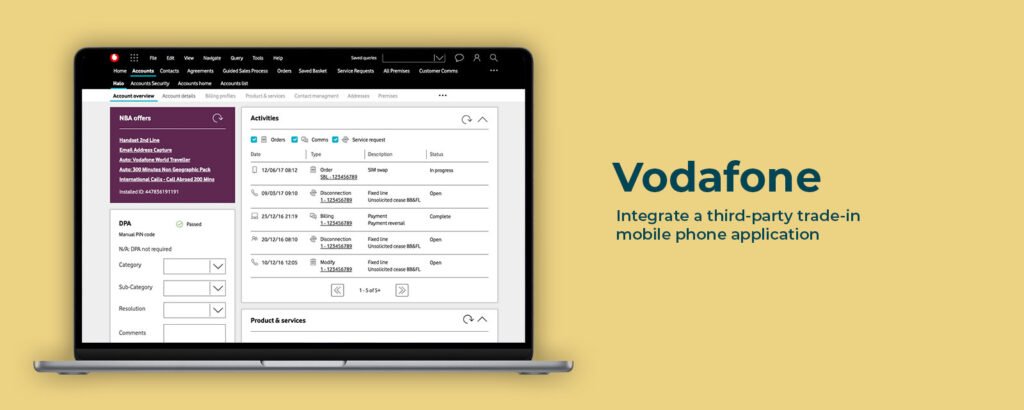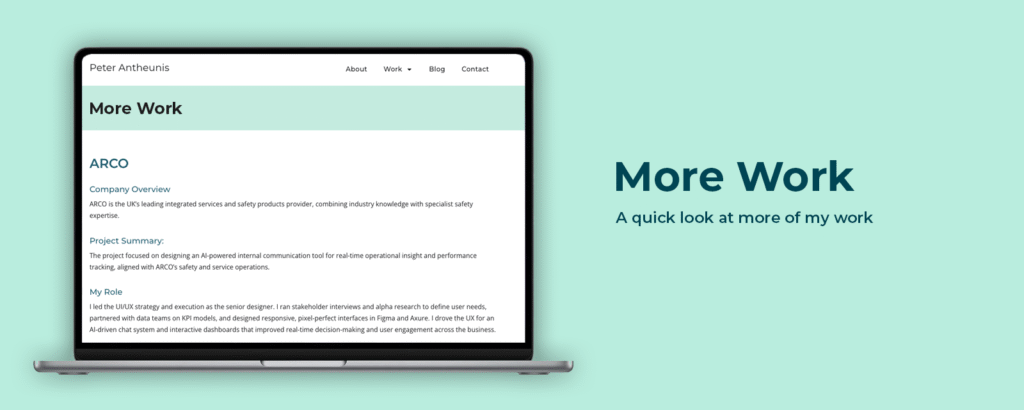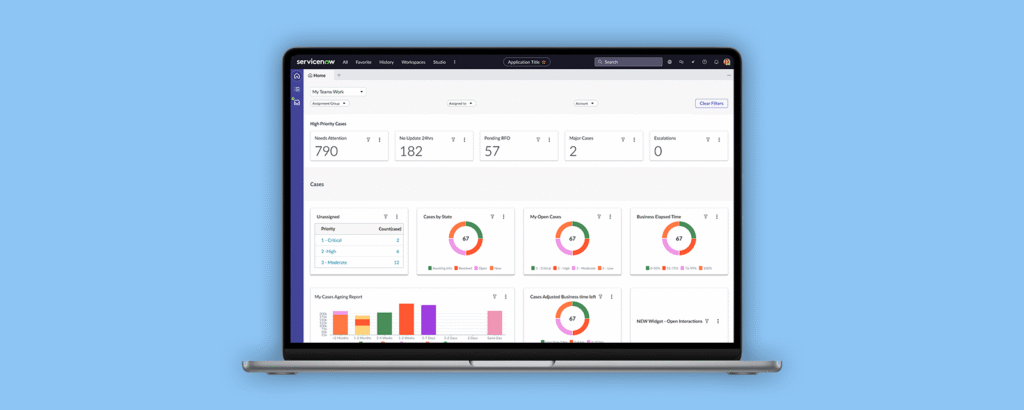
BT Business Complaints Platform Redesign
Overview
BT Business was handling complaints across two outdated systems Agent Desktop and IMP, leading to slow case resolution and scattered data.
We migrated the entire process into ServiceNow, simplifying workflows, reducing manual work, and preparing the platform for smart automation. With the use of GenAI, we further optimized key parts of the complaints journey streamlining intake, enhancing case categorization, and accelerating resolution.
Background
BT Business is the enterprise facing division of BT Group, delivering connectivity, IT, and communications solutions to SMEs across the UK. The company had begun investing in AI and automation, but many core workflows, especially complaints, were still trapped in outdated, manual systems.
I joined in September 2024 as the Senior UX/UI Designer on a 15 person cross functional team, including developers, AI engineers and one other UX designer. I took point on all UX efforts driving research, shaping design decisions, and bridging UX, AI, and engineering to keep everything aligned sprint to sprint.
What I delivered:
A structured design process combining workshops, user interviews, and rapid prototyping to ensure every design was grounded in real needs and business priorities.
Usability improvements that simplified complex screens, reduced steps by 30%, and led to a noticeable drop in agent support queries.
A reusable UI kit in Figma built on the ServiceNow library to speed up collaboration and ensure consistency.
A full design system with documented tokens, patterns, and accessibility rules, all aligned to GDS standards allowing the team to scale new features fast and clean.
The process
We worked in two-week sprints with tight alignment across UX, AI, and development. I led UX delivery throughout each cycle—driving design from planning to sign-off.
Sprint Breakdown:
Sprint Planning: I co-led planning with the PO, turning features into design-ready stories and flagging UX risks early.
Daily Stand-Ups: I used daily syncs to clear blockers and adjust design scope as dev constraints emerged.
Mid-Sprint Checkpoint: Reviewed progress with the PO and stakeholders to stay on track and avoid late changes.
Day 9 Demos: Presented clickable Figma prototypes and live features, capturing feedback for immediate iteration.
Day 10 Agent Testing: Ran in-person reviews with frontline agents, feeding usability insights into the next sprint.
Final Sign-Off: Aligned with the UX and Complaints leads to approve final UI and document edge cases.
Retrospectives: Used retros to flag handoff issues and propose fixes—like unclear specs or late copy tweaks.

Understanding the Problem
BT Business was receiving consistently poor reviews on Trustpilot, with customers citing slow complaint resolution and a lack of visibility into their cases. Behind the scenes, complaints agents were stretched thin managing cases across two disconnected legacy systems with no unified view, no automation, and constant manual rework.
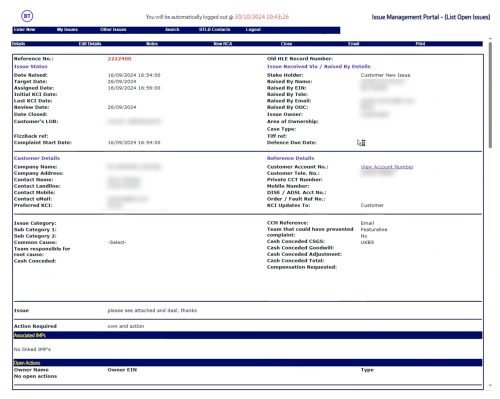
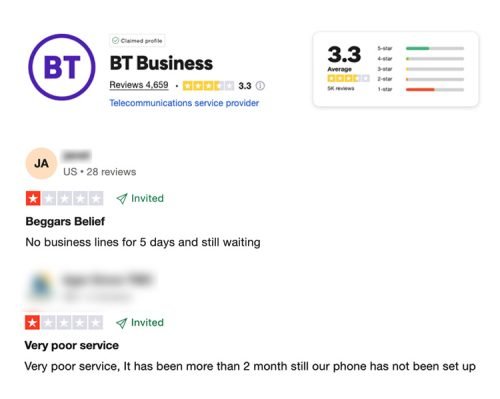
To fully understand where the process was breaking down, I embedded myself with the team and ran a focused discovery phase:
On-site Discovery: Spent three days at the Glasgow head office meeting with the Complaints Workflow team, frontline agents, and the Head of AI to identify bottlenecks and explore automation use cases.
User Interviews & Shadowing: Conducted in-depth interviews and shadowed agents live—surfacing friction points like double data entry, inconsistent case notes, and delays caused by system handoffs.
Stream Analysis: Mapped all active complaint streams, measured volume, and flagged high-friction flows like billing disputes and outage escalations.
Requirements Gathering: Worked closely with stakeholders to capture core business goals, escalation rules, and compliance boundaries.
Ideation Workshops: Facilitated journey mapping and solution sketching with product and ops teams—prioritizing high-impact fixes that could be solved within the ServiceNow environment.
Gathering Insights
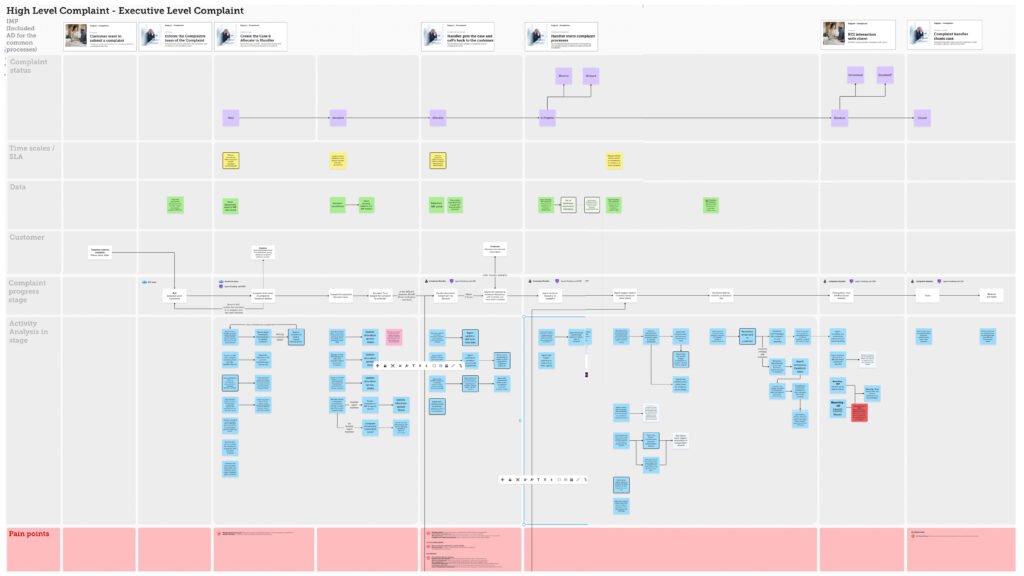
After completing interviews and shadowing sessions, I synthesized all feedback in Miro alongside our other UX designer to map out the “As-Is” complaints experience from the ground up.
We used affinity mapping to cluster user pain points, behaviors, and quotes, then charted five distinct complaints workflows end to end. These ranged from billing disputes to service outages, each with different triggers, actors, and failure points.
What stood out immediately were three recurring pain patterns:
Manual Handoffs: Agents were copying information between systems, often re-entering the same data multiple times.
Data Inconsistency: Case records were fragmented across platforms, making it hard to escalate or resolve issues accurately.
Progress Blind Spots: Neither customers nor agents had visibility into where a complaint stood fueling frustration and repeat calls.
These insights shaped our design direction: we prioritized streamlining data entry, building consistent case views, and introducing clear progress indicators early in the new ServiceNow flows.
Narrowing Down the Scope of Work
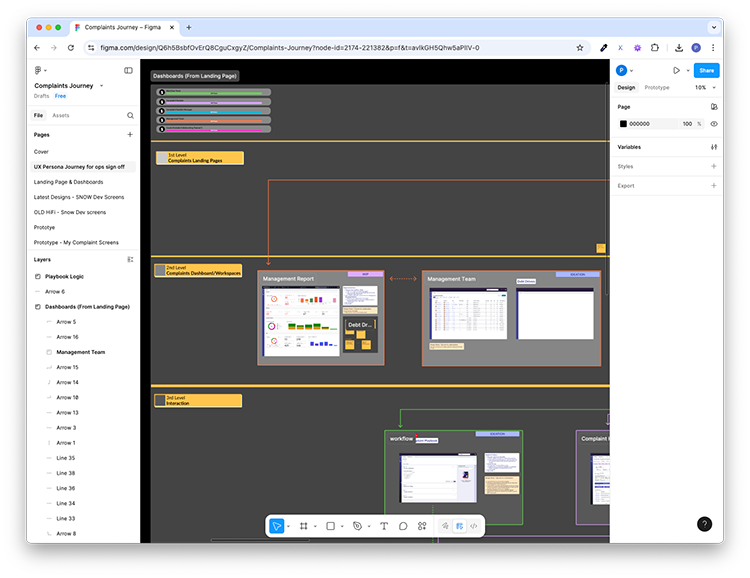
With dozens of complaint streams and an extensive ServiceNow feature set, we needed to focus fast. We couldn’t solve everything so I worked with stakeholders and product leads to scope an MVP that delivered real impact without blowing the timeline.
How we scoped the MVP:
From the five mapped workflows, we prioritized the top three by volume and complexity: billing errors, service outages, and customer feedback loops. For each, we defined a focused feature set streamlined intake forms, status tracking, and automated notifications.
Since ServiceNow came with a solid UI library, we skipped heavy low-fi wireframes and went straight to high-fidelity mockups in Figma. I designed core screens like the landing page, case creation flow, and resolution dashboard using our shared design kit so stakeholders saw polished, clickable prototypes from day one.
We validated layout and navigation through lightweight sketching and informal walkthroughs with agents and SMEs. Their feedback like field order changes or clearer labels fed directly into quick Figma updates and design system refinements.
To avoid scope creep, we also defined clear success criteria for each flow: task completion rates, error reduction, and user satisfaction benchmarks. That way, we knew when the experience was “done” not just when it looked good.
By narrowing focus and jumping straight to interactive hi-fi concepts, we earned early stakeholder buy-in, cut down on rework, and built momentum toward a scalable, future-proof complaints platform.
Validating the Designs
Before locking in development, we ran a two-pronged validation process to ensure our concepts solved real agent pain points and aligned with business needs.
1. Stakeholder Walkthroughs
I led interactive Figma sessions with the Product Owner, Complaints Team Lead, and AI Lead to review key screens case intake, status dashboard, and automation UI. We captured immediate feedback around field order, label clarity, and AI prompt placement, and iterated in Figma on the spot.
2. Agent Usability Testing
At BT’s Glasgow HQ, we conducted in-person, moderated sessions with high-volume complaint agents using a think-aloud approach. Tasks included creating a case, checking complaint status, and triggering an AI-based suggestion.
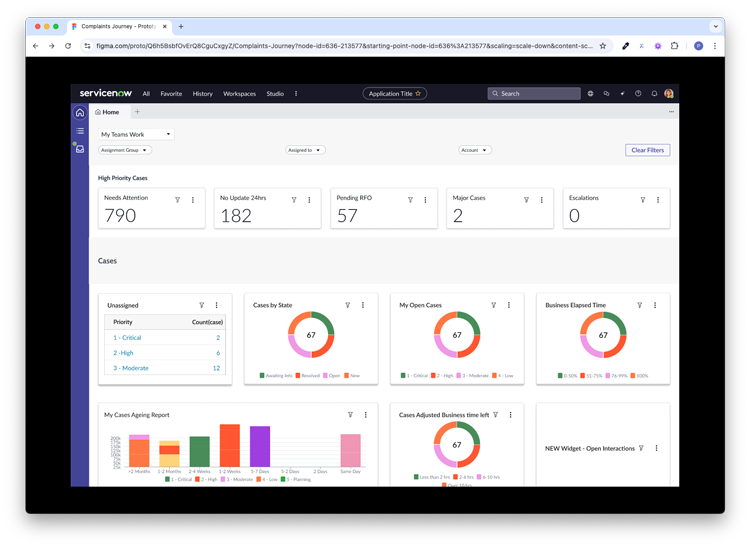
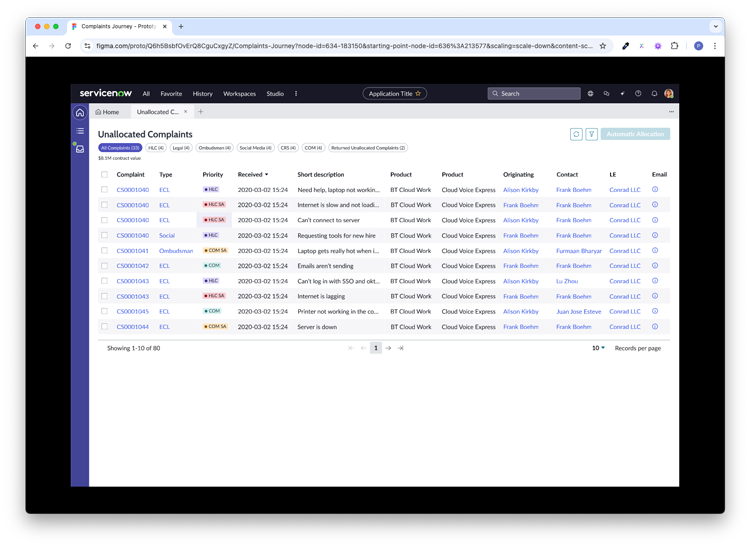
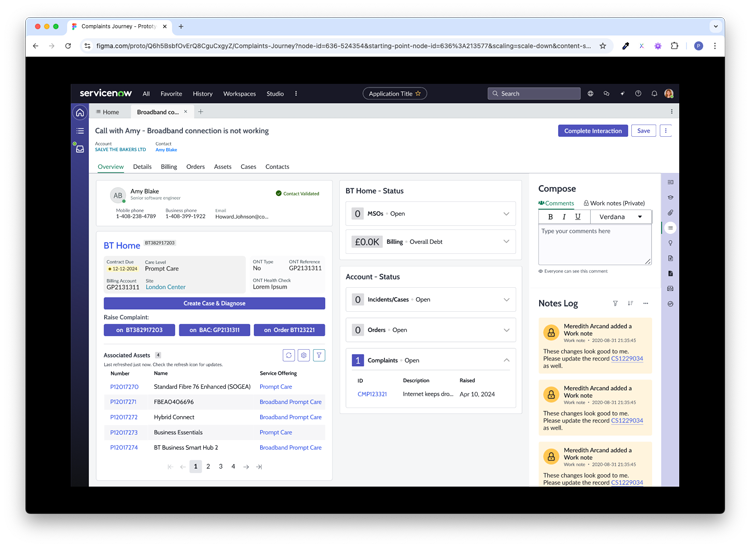
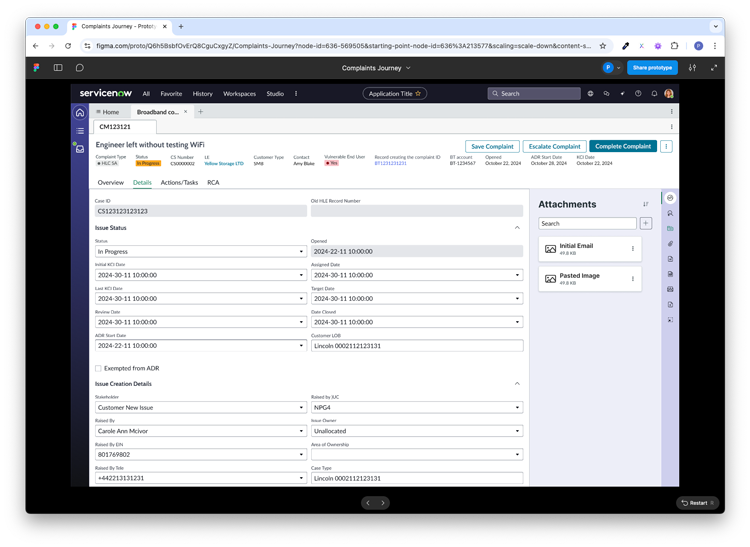
The results:
Average task time dropped by 35% compared to legacy tools
Agents rated the experience 4.6/5 for usability
Feedback led to a clearer progress indicator and cleaner AI UI
Every approved update was built back into the living design system updating tokens, components, and documentation. We followed up with a second review to confirm the new changes landed well before final handoff to development.
Developing the Designs
Once our high-fidelity designs were approved, I prepped everything for development by embedding tokens, specs, and assets directly into Figma’s Dev view giving engineers one clear source of truth.
I paired daily with front-end devs to walk through interactions hover states, validation rules, responsive behavior and updated specs live in Figma and Jira as needed. This tight feedback loop prevented misalignment and reduced back-and-forth during build.
As tickets hit staging, I ran fast UX reviews checking spacing, styling, and interaction logic against the design system. Any issues were flagged immediately and resolved in cycle.
I also maintained our living design system throughout updating components, tokens, and documentation in real time to keep design and dev fully aligned for future sprints.
Results and Takeaways
The redesigned complaints platform launched on schedule and delivered immediate impact. GenAI-driven case intake sped up the first step in the process by 35%, and agents rated the new experience 4.6 out of 5 for ease of use.
By pairing daily with engineers, running rapid stakeholder demos, and keeping our design system tightly aligned with dev, we avoided costly rework and shipped high-quality features in just a few focused sprints.
What I learned: On a platform like ServiceNow, where the UI is partially constrained, skipping wireframes and going straight to polished prototypes helped accelerate buy-in without sacrificing usability. Rapid, iterative feedback from agents and stakeholders made the difference between “approved” and “actually loved.”
We didn’t just ship a UI—we built a scalable system teams rely on every day.
This wasn’t just about fixing an old tool — it was about building a smarter, faster, and more human experience that agents trust and customers feel.
More projects
